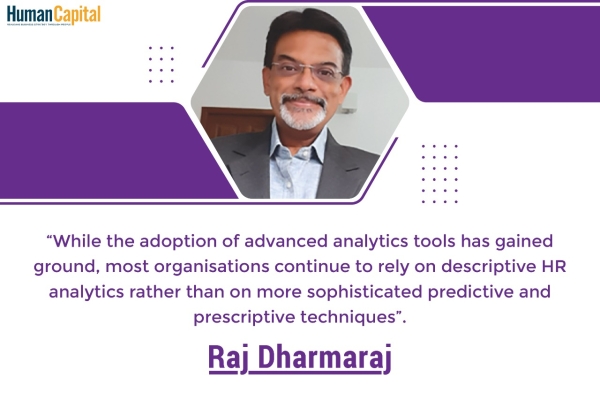The world is in the midst of a work revolution. The onset of remote work and distributed workforce, coupled with the ever-evolving needs of the business, are driving organizations to revaluate their approach to talent management and acquisition.
Employees with skills that empower them to keep up with this momentum of change – like people management, adaptability, and technological literacy – are now in great demand in the market. However, today’s employers are striving hard to keep them on board.
Commitments of attractive perks and pay are commonly used to lure, compete, and retain the top talent. But when you take into consideration the employee turnover cost at the end of the year – this luxury seems counterintuitive. And yet, several reports indicate that employees have and will continue to leave their jobs, the reason for which is attributed to lack of development opportunities and unsupportive management. The most apparent solution to improving employee retention, in that case, is initiating better training and development programs. However, as employees get on the way up into managerial roles, the capabilities, and skills that ensure their growth in a given role change. If a salesperson is exceptionally well at closing sales, doesn’t mean he or she will be able to effectively oversee others doing the same job. Thus, as a company, it is important and necessary to scrutinize and determine the performance indicators that the organization values. And for the senior management team, it is crucial to work alongside the frontline managers to understand the core factors that make certain employees outpace others and how those ‘key’ members can be retained!
Upon recognition of who the ‘key’ talent is, the next step to follow is finding if there are appropriate retention tools in place to encourage and retain them. Here are a few things to consider:
Motivation
What is it that keeps the group of employees motivated? It may vary for all; for some, it could be learning opportunities whereas for others it may be compensation, challenging work, or the chance to grow in the organization. If having these employees is a priority to the organization then it is important to find out what motivates them and strategize a plan accordingly.
Opportunities
Losing some of the talents through natural attrition is a concern most organizations are facing these days. Therefore, it is essential to recognize where those gaps within the organization exist and then either hire externally or leverage this as an opportunity to groom and develop one of your high potential employees. There isn’t a better way to retain a good employee than to offer them a career development opportunity, on condition that the right tools are kept in place to help make the employee attain success.
Training and Development
One of the common mistakes that a lot of companies make is that the employees are promoted to the next level without providing adequate training. Most companies assume that great employees will automatically learn the ropes once they are sent to the next level. For instance, an employee who’s a star performer may not necessarily be a great team leader and possibly prove to be a mediocre manager. So, as aggressive growth strategies are being developed, it’s more critical than ever to ensure the right training and development programs are framed to retain and develop the existing key talent.
Compensation
Year after year, companies must review and revamp their total compensation programs. The market is only likely to become more and more competitive and the employees may possibly feel a little disappointed with the lack of merit increases, lack of bonuses in the last few years, and/or probable cut backs in salaries, which can push them to hunt the market for some new opportunities. Again, this is a crucial time ensure there’s a set benchmark to the compensation plan to keep up with the competition.
Lastly, what remains most important is to involve the employees in the strategy and development plans of the company. Are they being a key contributor and part of the bigger picture? Are they being held accountable? Are they being challenged from time to time? If not, NOW is the time to undertake all of these activities. A lot of times, all they are looking for is to become more valuable to the company and an opportunity to learn, grow, and succeed. At first, it might seem challenging to include every employee in this kind of strategic planning or personalized training, but it’s possible for any company to do so when managers support a learning environment.
Here’s how:
1. Start by questioning to get insights on employees
A few examples to kickstart that process:
· What parts of the job are most rewarding and interesting?
· What areas of work are challenging?
· What kind of steps are being taken to reach short as well as long-term career goals?
· Are there other committees, additional responsibilities, or projects you would like to take up?
2. Generate more on-the-job opportunities
3. Personalize learning experiences
4. Offer regular feedback
The high potential employees represent the future of any company, and the manner in which employers support them determines how bright and strong that future can be. By recognizing and nurturing the talent with superior engagement, exceptional aspiration, and unique skills, the next generation of leaders can be well equipped to promote innovation, boost performance and drive sustainable growth. When those at leadership positions begin to make an effort to implement employee-centric values in their interactions and continually polish their training based on new observations, they will be able to engage and retain top talent.

Does your organisation support you in maintaining work-life boundaries?
Trending
-
SBI General Insurance Launches Digital Health Campaign
-
CredR Rolls Out 'Life Happens' Leave For Its Employees
-
Meesho Announces 30-Week Gender-Neutral Parental Leave Policy
-
Microsoft Unveils Tech Resilience Curriculum To Foster An Inclusive Future
-
60% Indian Professionals Looking For Job Change Due To COVID: Survey
-
SpringPeople And Siemens Collaborate For Digital Transformation Push
-
86% Professionals Believe Hybrid Work Is Essential For Work Life Balance: Report
-
Almost 1 In Every 3 People's Personal Life Affected Due To Work Stress
-
Meesho Rolls Out Reset And Recharge Policy For Employees
-
80% Of Talent Leaders & Academics Say Pandemic Changed Skill Needs For Youth: Report
-
Hero Electric Rolls Out 'Hero Care' Program For Employees
-
Human Capital In Collaboration With ASSOCHAM Hosts Virtual Conference
-
IKEA India, Tata STRIVE Collaborate To Create Employability And Entrepreneurship Opportunities
-
SAP India, Microsoft Launch Tech Skilling Program for Young Women
-
DXC Technology, NASSCOM Collaborate For Employability Skills Program
-
Lenskart To Hire Over 2000 Employees Across India By 2022
-
Mindtree Launches Learn-and-Earn Program
-
Tata AIA Extends 'Raksha Ka Teeka' To Its Employees
-
Swadesh Behera Is The New CPO Of Titan
-
NetConnect Global Plans To Recruit 5000 Tech Professionals In India
-
Hubhopper Plans To Hire 60% Of Indian Podcasters By 2022
-
Corporate India Needs More Women In Leadership Roles: Report
-
Aon to Invest $30 Million and Create 10,000 Apprenticeships by 2030
-
Tech Mahindra Launches ‘Gift a Career’ Initiative for Upskilling of Youth
-
40% Women Prefer Flexible Working Options in Post-COVID World: Survey
-
3 out of 4 companies believe they can effectively hire employees virtually: Report
-
Vodafone , CGI and NASSCOM Foundation launch digital skills platform
-
Odisha: Bank, postal employees to deliver cash for elderly, differently-abled persons
-
Skill India launches AI-based digital platform for "Skilled Workforce"
-
Hiring activity declines 6.73% in first quarter: Survey
-
70% startups impacted by COVID-19 pandemic
-
Bajaj Allianz Life ropes in Santanu Banerjee as CHRO
-
Over 70 Percent MSMEs look at cutting jobs to sustain businesses
-
93 Per Cent employees stressed about returning to office post-lockdown
-
Johnson & Johnson India announces family benefits for same gender partners
-
Indian firms turning friendly towards working mothers
-
Welspun India names Rajendra Mehta as new CHRO
-
Wipro partners with NASSCOM to launch Future Skills platform



Human Capital is niche media organisation for HR and Corporate. Our aim is to create an outstanding user experience for all our clients, readers, employers and employees through inspiring, industry-leading content pieces in the form of case studies, analysis, expert reports, authored articles and blogs. We cover topics such as talent acquisition, learning and development, diversity and inclusion, leadership, compensation, recruitment and many more.
Subscribe Now












































Comment